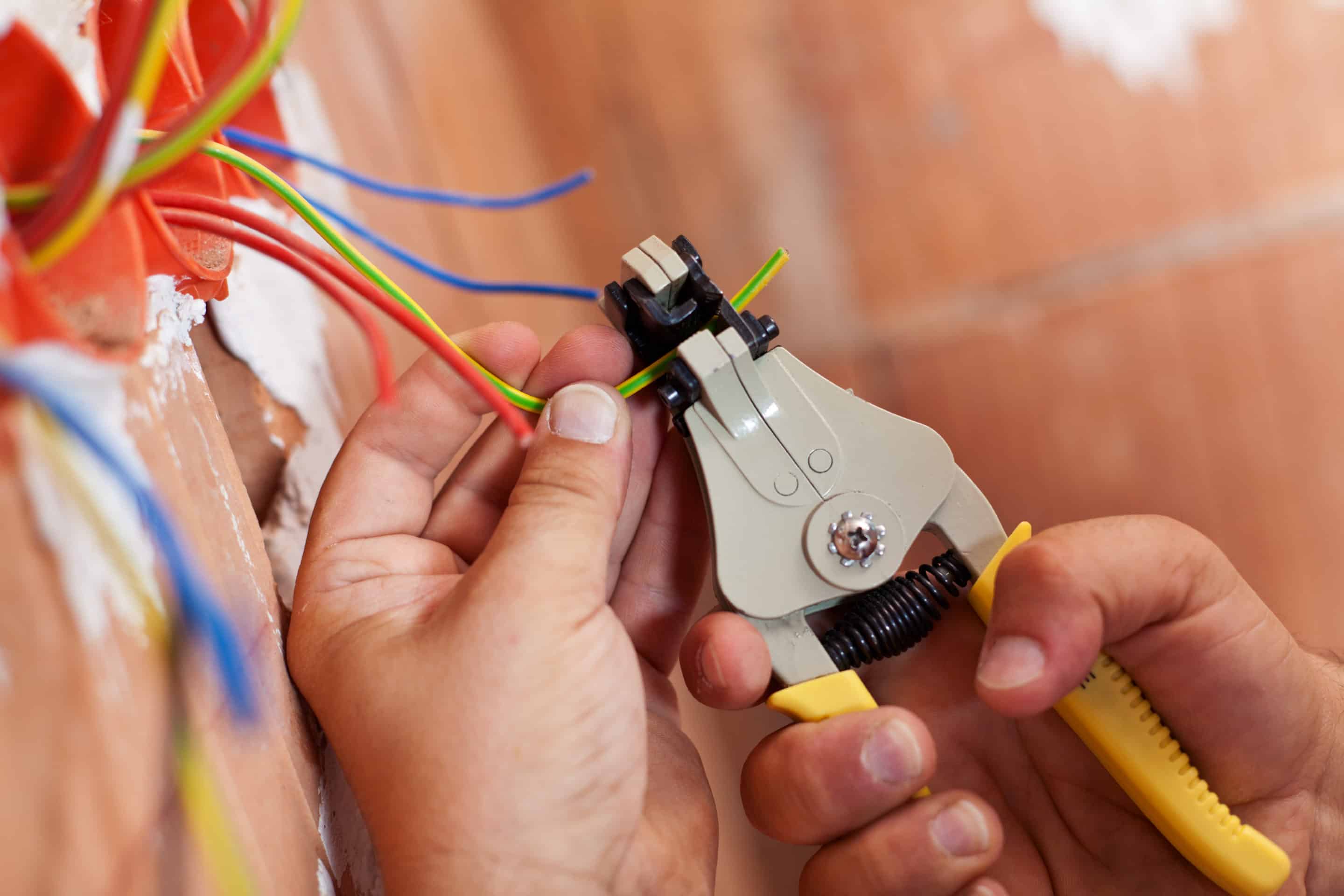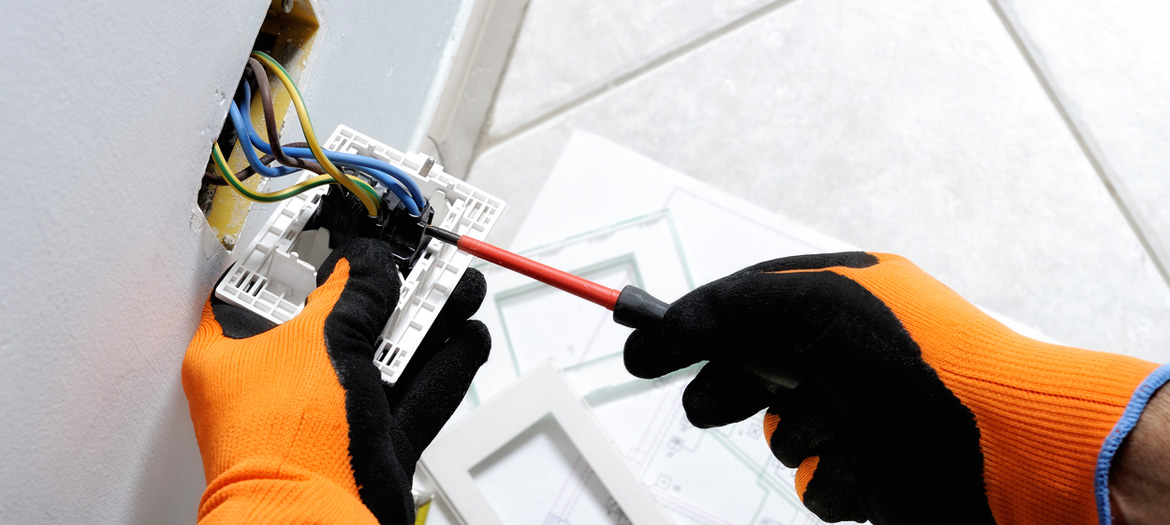Typical Electrical Troubles Every House Owner Need To Find out about
Home owners often run into various electrical issues that can affect safety and security and performance. Issues like flickering lights and tripped circuit breakers are extra usual than several realize. These circumstances can indicate much deeper electrical worries that warrant interest. Understanding the threats and signs connected with obsolete electrical wiring and dead outlets is crucial. What measures can be taken to prevent these problems? Checking out these usual electric problems might disclose essential insights for keeping a safe home environment.

Flickering Lights: Causes and Solutions
Why do some home owners experience flickering lights? Flickering lights can be a common inconvenience, often indicating underlying electric issues. One main cause is loose or faulty links within lights or circuitry, which can cause intermittent power supply. Additionally, making use of high-wattage appliances on the very same circuit may cause voltage changes, resulting in lowering or flickering. An additional possible problem is an overloaded circuit, where also numerous devices attract power all at once, straining the electrical system. Moreover, degraded or out-of-date circuitry can contribute to inconsistent electrical circulation. In many cases, flickering lights might signify a trouble with the home's electric panel or solution line. Home owners should resolve flickering lights promptly to prevent potential dangers. Solutions might include tightening links, redistributing device tons, or seeking advice from a licensed electrician for an extensive evaluation. Identifying the source can assist guarantee a secure and steady electrical system in the home.
Tripped Circuit Breakers: What You Need to Know
Have property owners ever before wondered what triggers their circuit breakers to journey unexpectedly? This usual issue often emerges from an overload of electric circuits, where a lot of gadgets attract power concurrently. In such situations, the circuit breaker works as a security device, disrupting the circulation of electrical energy to stop overheating and possible dangers. Another regular cause is a brief circuit, which happens when a real-time wire calls a neutral wire, developing a surge of electrical power that journeys the breaker. Ground faults can also lead to tripped breakers; these happen when a live cord touches the ground or a based surface area, presenting major safety dangers. Homeowners should regularly assess their usage of high-wattage home appliances to avoid overloading circuits. Furthermore, recognizing the function of circuit breakers can help them respond properly during a journey, ensuring their home stays secure and well-maintained.
Outdated Electrical Wiring: Threats and indicators
Obsolete wiring can present substantial dangers to homeowners, frequently going undetected until problems develop. Houses constructed before the 1980s might still have light weight aluminum electrical wiring or knob-and-tube systems, which are no much longer taken into consideration safe. Indicators of obsolete wiring include flickering lights, regularly tripped breaker, or burning scents near electrical outlets. These indicators may suggest that the electrical system is overburdened or deteriorating.Additionally, home owners might observe burn marks around outlets or buttons, which can indicate overheating. The risk of electrical fires noticeably raises with obsolete circuitry, as these systems were not created to deal with modern electric lots. Home owners are urged to have their electrical wiring examined frequently, specifically when refurbishing or adding new home appliances. By recognizing these indicators early, they can avoid hazardous circumstances and maintain a more secure living atmosphere. Updating to current electrical standards is a positive step in maintaining home safety and performance.
Often Blown Fuses: Fixing Tips
Frequent blown merges can show underlying electrical concerns that might come from out-of-date wiring or overloaded circuits. Homeowners experiencing this trouble ought to first determine the devices attached to the affected circuit. It is suggested to avoid utilizing several high-wattage tools concurrently, as this can bring about circuit overload. If the issue persists, checking the fuse box for indications of wear or damages is important; a malfunctioning circuit box may need replacement.Additionally, inspecting for loose connections within the circuit can assist prevent future occurrences. House owners ought to additionally validate that the integrates being made use of are of the appropriate amperage, as making use of a wrong fuse can exacerbate the trouble. Consulting a certified electrical contractor is recommended to assess the electrical system further if these troubleshooting pointers do not solve the concern. Resolving these worries promptly can help reduce dangers and guarantee the safety and security of the home's electric infrastructure.
Dead Outlets: Common Reasons and Solutions
When a homeowner experiences a dead outlet, it can usually give disappointment and confusion. A number of usual reasons may result in this problem. One regular wrongdoer is a stumbled breaker, which can be easily reset. If any breakers are in the off placement, homeowners should evaluate their electrical panel to check. An additional opportunity is a damaged outlet itself, which might need replacement. In addition, loose wiring links within the outlet can interrupt power flow, making inspection why not find out more essential.Sometimes, the issue may originate from an overloaded circuit, especially when numerous devices are linked. In such situations, rearranging the electrical lots can solve the problem. Property owners need to likewise think about the age of their circuitry; older systems might need updates to meet contemporary electrical demands. If these actions do not rectify the scenario, consulting an accredited electrical contractor is suggested to guarantee safety and appropriate medical diagnosis.
Electrical Shocks: When to Be Concerned
Just how can property owners establish whether an electrical shock warrants worry? House owners ought to first analyze the seriousness and context of the shock. A moderate fixed shock, typically really felt when touching metal objects, is common and generally safe. If the shock takes place while connecting with a plugged-in device or outlet, it may suggest an extra major issue.The place and regularity of the shocks are important. Repetitive shocks from the exact same resource, particularly in wet areas like kitchen areas or shower rooms, could signal faulty circuitry or poor grounding. Homeowners ought to additionally think about the sensation of the shock; a jolt that creates discomfort or contraction is extra disconcerting than a simple tingle.If there's any type of uncertainty, it is a good idea to seek advice from a qualified electrical expert. Overlooking prospective electrical risks can lead to serious safety risks, consisting of fire or extreme injury.
Overloaded Circuits: Avoidance and Precaution
Overloaded circuits pose considerable risks in household settings, usually bring about electrical fires or tools damage (Level 2 Electrician Sydney). Homeowners have to acknowledge the indicators of an overloaded circuit, such as regularly tripped breakers or lowering lights. Executing precautionary safety and security methods can help alleviate these hazards and guarantee a more secure living setting
Recognizing Overloaded Circuits
What indicators suggest that a circuit may be strained? Homeowners should be alert why not look here for several vital signs. Frequently tripped circuit breakers or blown integrates suggest too much tons on the circuit. Dimming or flickering lights, particularly when various other appliances are in usage, can signify an inadequate power supply. Additionally, electrical outlets or switches that feel warm to the touch might suggest overheating, a possible fire risk. Uncommon buzzing noises from outlets additionally necessitate focus, as they can signify electrical issues. Lastly, if appliances operate inefficiently or stop working to begin, it might suggest an overloaded circuit. Recognizing these indications early can assist stop significant electrical issues and promote a safer home atmosphere.
Preventive Security Practices
To keep a secure and effective electrical system, house owners should carry out preventative safety and security techniques that resolve prospective circuit overloads. One effective step is to stay clear of connecting way too many gadgets to a single outlet, as this can go beyond the circuit's ability. Making use of power strips hop over to these guys with built-in circuit breakers can aid distribute power safely. Property owners must additionally regularly check cables and appliances for damage and change any kind of damaged devices promptly. It is critical to assure that circuit breakers are working properly and to be aware of the complete electrical power being made use of in each circuit. In addition, seeking advice from a licensed electrician for regular inspections can determine potential issues prior to they intensify, guaranteeing a safer living setting and extending the life-span of electric systems.
Frequently Asked Concerns
Just how Typically Should I Have My Electric System Inspected?
Regular evaluations of electric systems are suggested every 3 to five years. Home owners should consider more frequent checks if they experience problems, carry out remodellings, or stay in older residential or commercial properties to ensure safety and security and conformity.
Can I Take Care Of Electrical Issues Myself or Work With a Professional?

What Are the Indicators of an Electrical Fire Risk?
Indicators of an electric fire risk consist of frequently tripped breaker, flickering lights, burning odors, tarnished outlets, or cozy, buzzing wires. Homeowners ought to continue to be vigilant and seek specialist assistance if any of these signs are present.
Exactly how Do I Know if My Home Needs an Electrical Upgrade?
To determine if a home needs an electric upgrade, indicators include regular breaker journeys, outdated electrical wiring, inadequate outlets, flickering lights, and the presence of older electric panels, indicating prospective security dangers and inadequacy.
Are There Particular Safety Tips for Do It Yourself Electric Work?
When thinking about DIY electric work, one should always turn off power, use shielded devices, validate circuit capability, comply with local codes, and consult specialists for complicated jobs to assure security and protect against accidents. One more potential problem is an overloaded circuit, where too several gadgets attract power at the same time, stressing the electric system. The threat of electric fires noticeably enhances with obsolete circuitry, as these systems were not developed to manage modern-day electric tons. Constant blown merges can show underlying electrical concerns that may stem from out-of-date wiring or overloaded circuits. To maintain a risk-free and reliable electrical system, house owners should apply preventive safety practices that deal with potential circuit overloads. Sydney Level 2 Electrician. Indications of an electrical fire threat include regularly stumbled circuit breakers, flickering lights, melting smells, tarnished electrical outlets, or warm, buzzing cords
Comments on “Knowing your home's power infrastructure with help from a Level 2 Electrician Sydney”